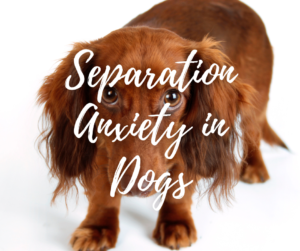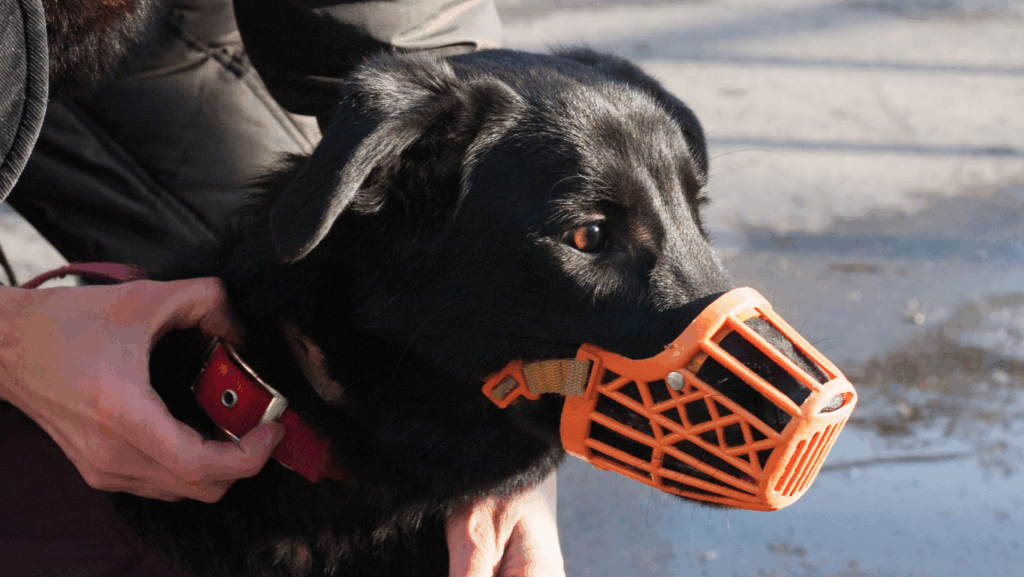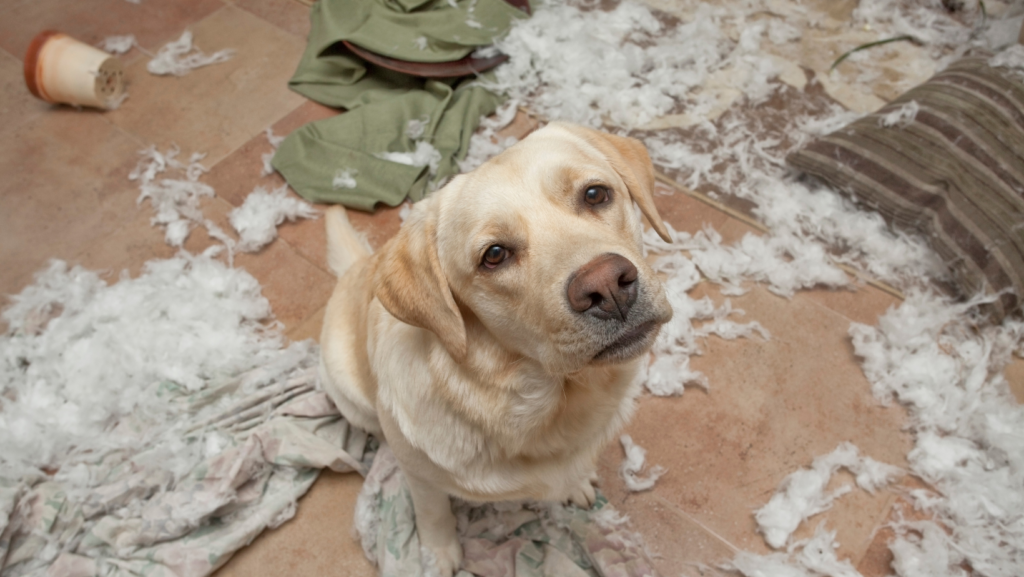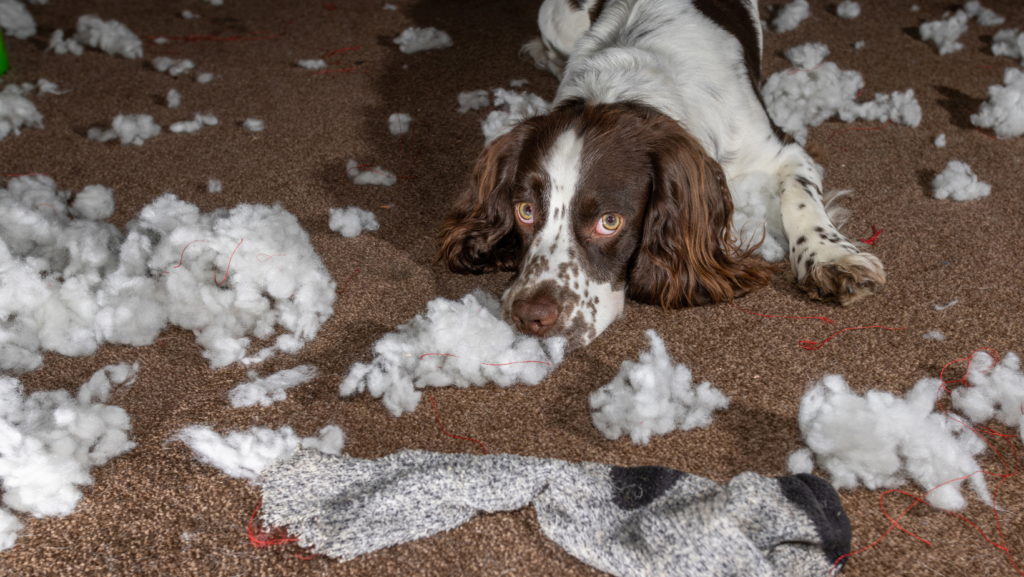Hey there, fellow dog enthusiasts! Ever dealt with those puppy eyes staring at you as you head out the door, leaving your furry pal feeling all kinds of anxious? Yup, we’re diving deep into the world of separation anxiety in dogs – that perplexing behavior that can turn your pup from cool canine to a ball of nerves. But fret not, my friends, because armed with the right know-how and some expert guidance, we’re about to decode this mystery. Get ready to unravel the secrets of separation anxiety, its triggers, how to spot it, and some killer tactics to keep your pup’s tail wagging even when you’re not around.
What is Separation Anxiety in Dogs?
Alright, let’s dig a little deeper into this separation anxiety business. It’s like this tidal wave of emotion that engulfs our furry pals when they’re away from us or flying solo. Dogs, well, they’re social creatures, part of the whole pack dynamic. It’s hardwired into their DNA to stick to their human tribe like glue. So, when separation anxiety comes knocking, brace yourself for a symphony of behaviors that are like neon signs flashing “I’m not okay!”
Now, picture this scene – your pup might engage in some serious pacing, like a marathon runner on a mission. There’s the howling, almost like a canine protest against being left behind. And oh, the chewing, like they’re channeling their anxiety into gnawing on whatever they can find. It’s like their own way of sending up a distress signal.
But wait, there’s more. Ever seen a dog who becomes an escape artist extraordinaire, trying to Houdini their way out of confinement? Yep, that’s another telltale sign. And let’s not forget about the potty accidents – it’s like their nervousness can’t help but spill over.
So, friends, when you spot these behaviors, it’s your pup’s way of shouting from the rooftops that they’re struggling. It’s a doggie SOS, and they’re looking to you to navigate this storm of emotions.
- Excessive barking or howling
- Destructive chewing or scratching
- Pacing or restlessness
- Inappropriate urination or defecation
- Attempts to escape confinement
Triggers of Separation Anxiety:
You know, when it comes to separation anxiety in our furry friends, there are a bunch of factors that can play a role. First off, sudden changes in their routine, like a new work schedule or moving to a different crib, can really set off their anxiety alarms. And let’s not forget about those pups that have been through tough times – like abandonment or neglect – they tend to have a higher chance of dealing with separation anxiety. Oh, and speaking of breeds, some like Labrador Retrievers and German Shepherds, with their loyal and social personalities, are kind of more susceptible to this whole separation anxiety thing.
How to Recognize Separation Anxiety:
Alright, folks, let’s dive into the nitty-gritty of separation anxiety because it’s key to handling our four-legged pals just right. When you’re dealing with a pup who’s showing those behaviors we chatted about earlier – you know, the pacing, howling, chewing stuff up – each time you head out, well, that’s a pretty solid signal that separation anxiety might be in the mix. But hang on, we’ve got to do some detective work here. Before jumping to conclusions, we’ve got to consider other possibilities too. Sometimes, those same behaviors could be a result of medical hitches or simply boredom creeping in. So, it’s like a little checklist, you see? Rule out any health concerns and make sure your pup’s got enough to do to keep them engaged before pointing the finger at separation anxiety. This thoughtful approach is what sets the stage for effective handling, ensuring your furry friend gets the care they truly need.
Breaking a Dog’s Separation Anxiety:
Alright, my fellow dog enthusiasts, let’s talk turkey about tackling separation anxiety with finesse. Wrangling this challenge demands a healthy dose of patience and a well-thought-out game plan. So, here’s the scoop: we’re going to dive into gradual desensitization. Picture this – we’re easing your pup into the idea of “me time” by starting small. Short stints of solo time that gradually stretch out as your furry buddy gets more at ease with the whole idea. It’s like building a solid foundation, step by step.
But wait, there’s more in our toolkit! Crate training, my friends. Now, this isn’t some kind of doggy confinement – think of it as a cozy den, a safe haven where your pooch can feel snug when you’re not in sight. And here comes the secret sauce – positive reinforcement. Yep, we’re going to sprinkle in some treats or toss a toy into the mix. It’s all about connecting the dots for your furry pal, showing them that being alone can lead to some awesome rewards.
So, remember, pals, managing separation anxiety is a journey. With a structured approach, a dash of desensitization, a sprinkle of crate comfort, and a heap of positive vibes, we’re setting the stage for a happier, more relaxed pup when you’re not around.
For in-depth guidance on effective training methods, you can explore resources such as BeTheBossDogTraining.com, which offers specialized training programs designed to address separation anxiety in dogs.
Can Separation Anxiety in Dogs Be Cured?
Let’s dive into the real deal, folks. While I can’t promise a one-size-fits-all magic solution, I’ve seen time and again that with the right approach, our furry pals can make some serious strides in the separation anxiety department. Here’s the scoop: it’s a team effort between us, the pup, and you, the owner.
Now, remember, we’re not aiming for perfection here. We’re looking to put a sizable dent in that separation anxiety. Picture it like this – think of the anxiety as a puzzle, and we’re working together to find the best pieces that fit. The intensity of the situation, your pup’s unique personality quirks, and your dedication to the training process all have a role in shaping the outcome.
It’s all about helping your four-legged buddy build some solid coping skills. We’re in the business of taking that overwhelming anxiety and dialing it down a notch. So, buckle up, because this journey might have a few twists and turns, but together, we’re on a mission to give your dog the tools they need to handle those alone moments like a champ.
Timelines for Overcoming Separation Anxiety:
Alright, let’s talk about the timeline, my fellow dog devotees. Now, I wish I could give you a straight-up answer, but the truth is, this journey to conquer separation anxiety is a bit like a rollercoaster. Buckle in, because we’re in for a ride.
Picture this: it’s like planting a garden. Some blooms might show up in a few weeks, making you feel like a pro gardener, while others might take a bit longer to sprout their petals. It all depends on your pup’s unique temperament and the approach we’re taking.
Now, here’s the golden rule: patience. I can’t stress this enough. We’re not sprinting here; it’s more like a marathon. Every tiny win, every step your furry friend takes toward feeling more at ease when you’re not around, is a victory worth celebrating. It’s these small milestones that really show the magic of your dedication and the power of the training process.
So, as we navigate this adventure, remember that timeframes vary, but the progress you witness along the way is the real proof of your hard work. Embrace those little successes, and keep your eyes on the prize – a happier, more confident pup who’s ready to take on the world, even when you’re not right by their side.
Additional Tips for Preventing Separation Anxiety:
Now, let’s talk about the proactive side of the coin, my fellow dog enthusiasts. When it comes to preventing separation anxiety, especially with those adorable pups, we’ve got some strategies up our sleeves.
First up, we’re laying down the foundation with early socialization. Picture it like this – we’re creating a solid base for your pup’s social skills by exposing them to different people, places, and experiences. This helps them build that self-assured attitude that comes in handy when they’re on their own.
But wait, there’s more. Positive alone-time exposure is our secret weapon. We’re gently introducing your furry buddy to the idea that being solo isn’t so bad after all. It’s like teaching them that a little independence is a-okay.
Here’s the deal: consistency is king. Crafting a daily routine that your pup can rely on helps create a sense of stability. And let’s not forget about the mental workout. We’re keeping those doggy brains engaged with interactive toys or brain-teasing puzzles, even when you’re not there to play referee.
So, pals, remember, preventing separation anxiety is all about setting the stage early. With a sprinkle of socialization, a dash of positive alone time, a healthy dose of consistency, and a side of mental stimulation, we’re paving the way for a confident, well-adjusted pup who’s ready to take on the world – with or without you right there.
Conclusion:
Separation anxiety in dogs is a challenging but manageable issue. By understanding the triggers, recognizing the symptoms, and implementing effective training methods, you can help your furry companion overcome their anxiety and lead a more relaxed and content life. Remember that every dog is unique, and progress may take time. With dedication, patience, and the right resources, such as BeTheBossDogTraining.com, you can guide your beloved pet toward a happier and more confident existence.





